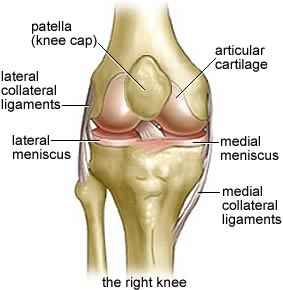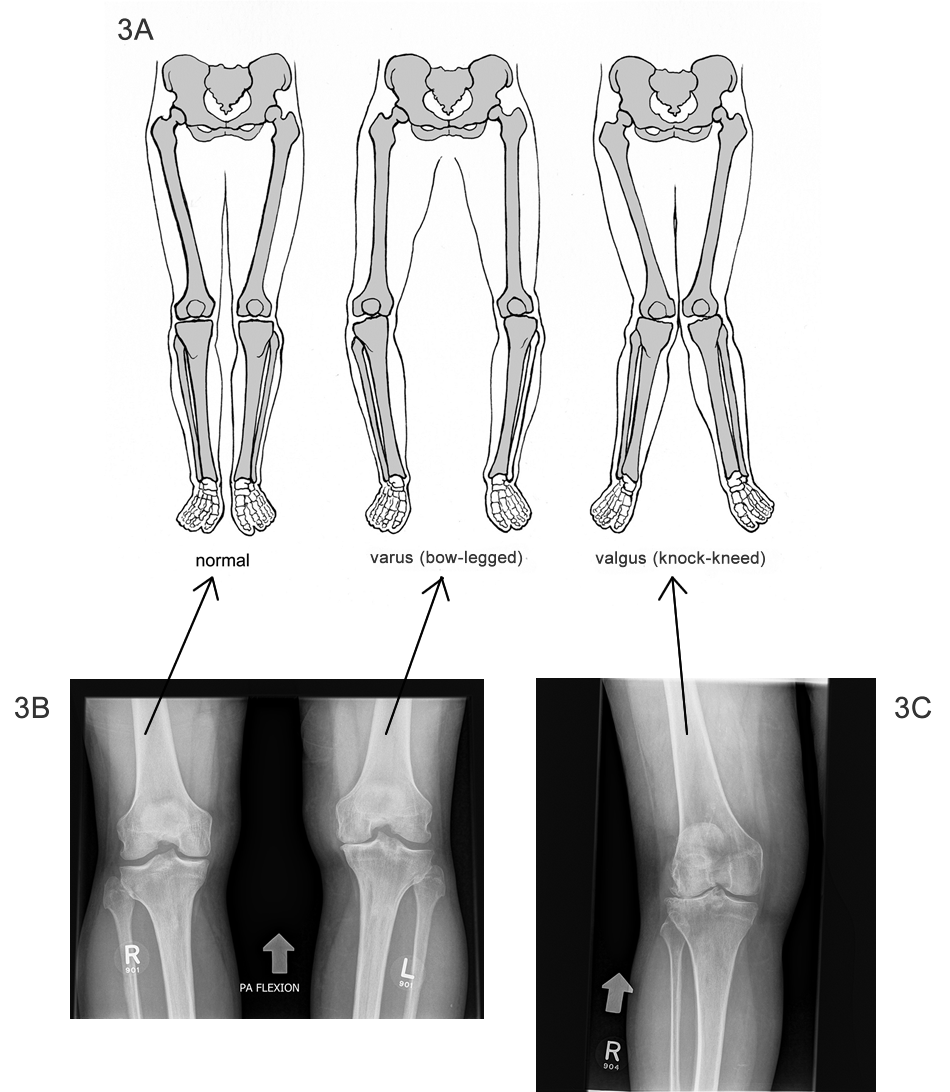The knee operates like a hinge; it opens and closes to allow knee flexion and extension. Like a hinge it is essential that the joint has good alignment in order for it to operate smoothly.
The alignment of the knee is influenced by the hip and foot position; the knee cap (patella) is influenced by the strength of the thigh muscles. An imbalance in the strength of the thigh muscles can cause the knee cap to drag along its bony groove; again this can cause tissue irritation and initiate a pain response.
The hip and the foot can position the whole knee joint out of alignment. Over time this can increase the rate of wear on a particular side of the knee (as seen in the diagram below).
At times an abnormal position of the knee can be forced to happen very quickly. Trauma of this nature can damage the knee joint ligaments and menisci (see anatomical diagram).
Exercises to gain best alignment of strength of the joint are essential to restore best function. A clinical appointment with your GP or QuickPhys can help to determine if there is any significant tissue damage that requires surgery or if there is a significant inflammatory response that could benefit from an injection.
Exercises for stability
Open chain quads
Wall squat
Clam
Standing pelvic drop/hitch
Single leg squat
Exercises for mobility
Quads stretch
Hamstring mobilisation
Adductor mobilisation
Abductor; TLF
Rec Fem


